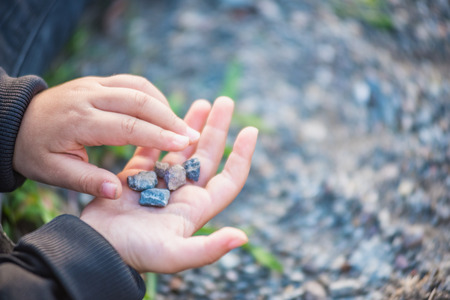Introduction to British Bushcraft
Bushcraft in the UK is a time-honoured tradition that weaves together the threads of history, nature, and resourcefulness. Rooted in ancient practices, British bushcraft reflects the island’s diverse landscapes—from rolling woodlands and misty moors to rugged coastlines and dense forests. These unique environments have shaped not only the way people interact with nature but also the specific tools and techniques they employ to thrive outdoors. The British approach to bushcraft places a strong emphasis on sustainability, respect for wildlife, and using locally sourced materials. Over centuries, skills such as carving wooden knives, crafting bows from native yew or ash, and making fire using flint have been passed down through generations. Today, bushcraft remains important for families and individuals seeking connection with the land, self-reliance, and a sense of adventure. Whether you’re exploring the bluebell woods of Kent or the wilds of the Scottish Highlands, learning traditional bushcraft skills is both an invitation to bond with nature and a practical way to ensure safety and comfort in the great British outdoors.
2. Selecting the Right Materials from the Wild
When crafting bushcraft tools in the UK, your journey truly begins with the careful selection of natural materials from the local environment. British woodlands and hedgerows are teeming with resources, but it’s important to gather them both responsibly and sustainably—after all, we want future generations to enjoy these same wild spaces.
Identifying Suitable Materials
The first step is knowing what you need and where to look. Different tools require different materials, and each woodland offers its own treasures. Here’s a handy table highlighting some common materials you might find in the UK and their typical uses:
| Material | Where to Find | Typical Use |
|---|---|---|
| Hazel wood | Hedgerows, mixed woodland | Bows, walking sticks, tool handles |
| Ash wood | Mature forests, woodland edges | Shafts for axes or spears, strong handles |
| Flint stone | Chalky soils (South East England) | Knives, arrowheads, scrapers |
| Nettle fibres | Damp hedgerows, field edges | Cordage, bindings, nets |
| Elder branches (hollow) | Woodland margins, hedges | Bellows tubes, whistles, blowpipes |
| Birch bark | Mature birch stands, heathlands | Containers, firelighters, waterproof coverings |
Sustainable and Responsible Sourcing Tips
- Seek Permission: Always ask the landowner before gathering materials—many British woodlands are privately owned or protected.
- Select with Care: Take only what you need and avoid damaging living trees unnecessarily. For example, collect fallen branches rather than cutting fresh ones when possible.
- Avoid Rare Species: Some native plants are protected; always check local guidelines before harvesting.
- Leave No Trace: Fill in any holes you dig and scatter leaf litter to restore the forest floor.
- Respect Wildlife: Be mindful of nesting birds or burrowing animals in hedgerows and undergrowth.
A Family Adventure in Material Gathering
Selecting materials can be a wonderful family activity. Children love identifying tree species or feeling the textures of bark and leaves. It’s an opportunity to teach them about respect for nature: explain why you’re choosing one branch over another or why some stones are left untouched. These moments help children develop both practical skills and a lifelong appreciation for Britain’s beautiful wild places.
![]()
3. Knife Crafting: A Staple of British Bushcraft
When it comes to bushcraft in the UK wilderness, crafting your own knife is both a rewarding and practical skill. British tradition places great value on resourcefulness, so lets explore how you can make a simple, reliable knife using locally sourced materials and age-old methods—perfect for family adventures or solo explorations.
Step 1: Sourcing Local Materials
Start by searching for materials in your surroundings. For the blade, look for old carbon steel files or discarded tools at local car boot sales or around the shed—they’re often perfect for repurposing. For the handle, native hardwoods like ash, oak, or hazel are ideal; these can be gathered from woodland walks (always ensure you have permission and collect responsibly).
Step 2: Shaping the Blade
If you’re using an old file, wrap it in cloth and carefully break off a suitable length. With a hand-held grinder or a coarse stone, shape one end into a pointed tip and gradually bevel one edge to form the blade’s cutting edge. Traditional British bushcrafters often use water stones to finish sharpening, which ensures a safe and effective edge.
Step 3: Preparing the Handle
Select a piece of hardwood about as long as your palm. Using a small saw and whittling knife (or even your newly fashioned blade), carve it to fit comfortably in your hand. Cut a slot at one end for the tang of your blade—this is where traditional joinery skills come into play!
Step 4: Assembly
Insert the tang of your blade into the handle slot. Secure it with natural adhesives like pine resin mixed with charcoal powder, or use modern alternatives if available. Some bushcrafters wrap the join with strips of leather or jute twine for extra security and that classic British rustic touch.
Step 5: Finishing Touches
Smooth down any rough edges on both handle and blade using sandpaper or fine stones found riverside. For a proper British finish, treat the wood with linseed oil—easy to find in most hardware shops—to protect it against damp weather. Now you’ve crafted a tool that’s not just functional but steeped in local heritage and ready for many outdoor memories.
4. Traditional Bow Making in the UK Countryside
Making a simple bow together as a family is a wonderful way to connect with both nature and British heritage. The rolling fields and ancient woodlands of the UK have inspired generations of archers, from the legendary longbowmen of medieval times to modern countryside adventurers. For families eager to try their hand at bushcraft, crafting a basic bow is both safe (with adult guidance) and deeply rewarding.
Choosing the Right British Woods
Selecting the right type of wood is an important first step. Many native trees are ideal for bow making due to their flexibility and strength. Here’s a handy table for families exploring the woods:
| Wood Type | Common Locations | Why It’s Good for Bows |
|---|---|---|
| Ash | Hedgerows, woodland edges | Flexible, durable, easy to carve |
| Hazel | Coppiced woodlands, thickets | Bendable, light, traditional in Britain |
| Yew | Ancient churchyards, old forests | Classic longbow wood, very strong |
The Family-Friendly Bow Craft Process
- Find a straight branch (around 1.5 metres long for most children) without cracks.
- With adult supervision, use a bushcraft knife to gently remove bark and shape the bow. Always cut away from your body and wear gloves if possible.
- Tie a sturdy string or cord between the notched ends of your bow.
Tips for a Safe and Enjoyable Experience
- Always supervise children when handling tools.
- Respect local wildlife and only gather fallen or surplus branches.
- Keep your workspace tidy—just like our countryside!
Cultural Connections: Archery in British Tradition
The story of British bows goes back centuries. From Robin Hood’s Sherwood Forest adventures to village fêtes with friendly archery contests, bows have played a special role in UK life. This hands-on activity lets children and parents feel part of those traditions while learning practical skills and enjoying the great outdoors together.
5. Making Additional Useful Tools
Once you’ve mastered the basics of bushcraft knife and bow-making, it’s time to expand your toolkit with other handy implements perfect for the British wilderness. These tools—like wooden mallets, walking sticks, and simple traps—not only make outdoor life smoother but also offer wonderful opportunities for family collaboration and skill-sharing. Let’s explore how you can craft these essentials safely, while fostering teamwork and a sense of achievement.
Crafting a Wooden Mallet
A wooden mallet is invaluable when working with stakes or constructing shelters. Begin by finding a sturdy log, preferably from hardwood like ash or oak. With your bushcraft knife, shape one end into a comfortable handle, leaving the other end thicker as the striking face. Always carve away from your body and supervise children closely if they’re helping. Sand down any rough edges together for a smooth finish—this not only makes it safer but gives little hands a chance to contribute.
Making a Reliable Walking Stick
A good walking stick can be a true companion during rambles through the woods. Search for straight branches from hazel or chestnut, about chest height. Strip off any bark and knots using your knife. You might like to personalise your stick with carved initials or decorative bands—a fun project for children! Finish by rubbing in some beeswax or oil to protect the wood. Remember, crafting together is about both safety and shared memories, so work side by side and enjoy chatting as you go.
Constructing Simple Traps (for Education)
Learning how traditional traps work is part of bushcraft heritage in Britain, though it’s important to emphasise that these are for educational purposes only unless you have legal permission to use them practically. Try making a basic figure-four trap using found sticks—this classic design demonstrates balance and engineering skills. Always discuss local wildlife laws and ethical considerations as a family, reinforcing respect for nature at every step.
Safety First and Working Together
No matter which tool you’re crafting, always keep safety front and centre: wear gloves where appropriate, cut away from yourself, and ensure all sharp tools are supervised when children are involved. Encourage teamwork by dividing tasks—one person gathers materials while another shapes wood or sands surfaces. Celebrate everyone’s contribution with a well-earned cup of tea at the end—a beloved British tradition!
Building Confidence Outdoors
By making these additional tools together in the UK countryside, families build not just practical items but also confidence, problem-solving skills, and cherished memories. Every completed mallet or walking stick becomes a testament to collaboration—and an invitation for more adventures ahead.
6. Safety, Conservation, and Bushcraft Ethics
When enjoying bushcraft in the beautiful British countryside, safety, conservation, and ethical practices are essential for every adventurer—young or old. Whether you’re crafting a simple wooden spoon with your child or carving a bow for a forest challenge, understanding bushcraft safety is paramount. For families, it’s vital to supervise children closely, ensuring they use tools like knives and saws responsibly and always in an age-appropriate manner. Make sure everyone wears protective gear, keeps blades sharp (as blunt ones are more dangerous!), and maintains clear communication during activities.
Respecting the British Countryside
The UK’s woodlands, moors, and meadows are not just stunning backdrops—they’re living habitats home to countless creatures and plants. Always stick to marked paths where possible and avoid disturbing wildlife or trampling delicate undergrowth. Remember that many areas are privately owned or protected; check local guidelines before setting up camp or gathering materials for your bushcraft projects.
Laws About Tool Usage
British law is clear when it comes to carrying and using tools such as knives and axes in public places. Only carry what you need for your activity, and never bring tools into towns or cities unless absolutely necessary and lawful to do so. Always transport sharp tools safely—preferably in a secure bag—and be ready to explain their legitimate use if asked by authorities. For young bushcrafters, adult supervision is not just recommended but often legally required.
Leave No Trace Principles
One of the most important lessons we can pass on to our children is the principle of ‘leave no trace’. After enjoying a day of crafting in the woods—whether whittling a walking stick or fashioning a woodland bow—always tidy away scraps and litter, fill any holes you’ve dug, and restore the area to its natural state. By doing so, we protect these precious wild spaces for future generations while teaching respect for nature’s gifts. Practising responsible bushcraft isn’t just about skill—it’s about stewardship of the land we love.
Family-Friendly Bushcraft Activities
Embracing the great British outdoors as a family is a wonderful way to build lasting memories, confidence, and practical skills. Bushcraft isn’t just for adults—children can safely join in and benefit from hands-on learning with the right guidance. Here are some interactive bushcraft activities you can enjoy together, each fostering a closer bond and a deeper appreciation for the UK’s wild spaces.
Whittling Simple Tools Together
Start with safe, child-friendly whittling projects using soft wood and round-tipped knives under close supervision. Try carving tent pegs or marshmallow toasting sticks. This activity builds fine motor skills and encourages patience, while teaching respect for tools.
Building Miniature Bows and Arrows
Gather flexible hazel or willow branches from the woodland floor to craft small bows and arrows. Stringing and testing these creations in a safe area gives children a sense of achievement and connects them with traditional British archery lore.
Wildlife Tracking and Nature Walks
Turn tool-making into an adventure by searching for animal tracks or identifying bird calls along the way. Bring a homemade tracking stick to help measure prints, making each discovery part of your family story.
Constructing Simple Shelters
Collect fallen branches, bracken, and leaves to build a den or lean-to. Everyone can contribute, whether it’s gathering materials or weaving leafy walls. This not only fosters teamwork but also offers a cosy spot for snacks and stories.
Creating Nature-Inspired Art
Once your tools are made, use them to craft leaf crowns or woodland jewellery. Weave wildflowers, feathers, and grasses together—an ideal way for little ones to express creativity while learning about local plants.
Campfire Cooking (With Supervision)
Teach older children how to use their whittled sticks for roasting bread twists or marshmallows over a small campfire. Always prioritise safety: keep water nearby, establish clear fire boundaries, and involve everyone in tidying up afterwards.
Nurturing a Love for British Nature
Bushcraft as a family is more than making tools—it’s about sharing wonder, building resilience, and connecting with the land. These activities let children grow confident outdoors while strengthening family ties. So gather your kit, head out together, and let the UK wilderness inspire your next adventure!


